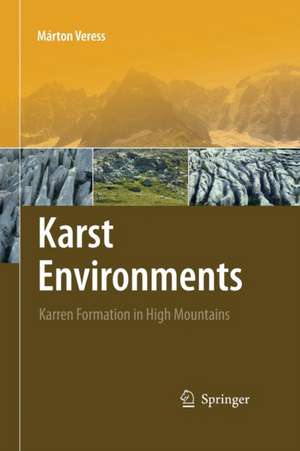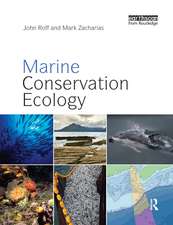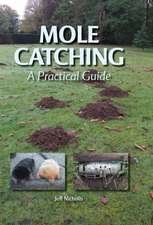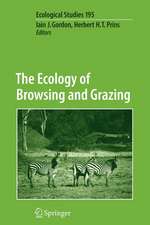Karst Environments: Karren Formation in High Mountains
Autor Márton Veressen Limba Engleză Paperback – 23 aug 2016
| Toate formatele și edițiile | Preț | Express |
|---|---|---|
| Paperback (1) | 833.09 lei 6-8 săpt. | |
| SPRINGER NETHERLANDS – 23 aug 2016 | 833.09 lei 6-8 săpt. | |
| Hardback (1) | 1002.61 lei 6-8 săpt. | |
| SPRINGER NETHERLANDS – 12 feb 2010 | 1002.61 lei 6-8 săpt. |
Preț: 833.09 lei
Preț vechi: 1015.97 lei
-18% Nou
Puncte Express: 1250
Preț estimativ în valută:
159.41€ • 173.70$ • 134.33£
159.41€ • 173.70$ • 134.33£
Carte tipărită la comandă
Livrare economică 24 aprilie-08 mai
Preluare comenzi: 021 569.72.76
Specificații
ISBN-13: 9789401776967
ISBN-10: 9401776962
Pagini: 240
Ilustrații: X, 230 p.
Dimensiuni: 155 x 235 x 13 mm
Greutate: 0.35 kg
Ediția:Softcover reprint of the original 1st ed. 2010
Editura: SPRINGER NETHERLANDS
Colecția Springer
Locul publicării:Dordrecht, Netherlands
ISBN-10: 9401776962
Pagini: 240
Ilustrații: X, 230 p.
Dimensiuni: 155 x 235 x 13 mm
Greutate: 0.35 kg
Ediția:Softcover reprint of the original 1st ed. 2010
Editura: SPRINGER NETHERLANDS
Colecția Springer
Locul publicării:Dordrecht, Netherlands
Cuprins
Research Sites and Methods.- Age and Characteristics of High Mountain Karren Formation.- Karren Features.- Karren Assemblages.- Local Karren Belts.- Coalescing of Karren Forms.
Recenzii
From the reviews:
“The volume is a summary of observations during 15 years of field trips to the European Alps and results and interpretation of the data collected. … Explanations are clear and well-written. The numerous illustrations and colored plates add greater understanding of the topics discussed. … an excellent guide for professionals, researchers, graduate students and university professors. … serve as a future reference for studies in this type of karst. It also provides very detailed information and many research method examples which are easy to follow.” (Natascha Wahlberg Macías, Carbonates and Evaporites, Vol. 25, July, 2010)
“The volume is a summary of observations during 15 years of field trips to the European Alps and results and interpretation of the data collected. … Explanations are clear and well-written. The numerous illustrations and colored plates add greater understanding of the topics discussed. … an excellent guide for professionals, researchers, graduate students and university professors. … serve as a future reference for studies in this type of karst. It also provides very detailed information and many research method examples which are easy to follow.” (Natascha Wahlberg Macías, Carbonates and Evaporites, Vol. 25, July, 2010)
Textul de pe ultima copertă
With a focus on karren formation in high mountains, and specifically in the European Alps, this text summarizes the scientific results of systematic observations made during field trips, as well as the interpretation, using modern analytical methods, of the data collected. Márton Veress, who has been working in different types of karren landscapes for more than fifteen years, presents the conditions and processes of high mountain karren formation as well as the properties of karren features. The book analyzes karren phenomena, their development, and their formation under different environmental conditions.
Introductory chapters provide an overview of karren formations, in addition to charting the history of research into karst environments at high altitude. The author then provides details of the sampling sites and the localities he has studied, and experimental procedures undertaken. After covering the details of the age and rate of karren form development, Veress gives an in-depth explanation of the general characteristics of high mountain karren formations. The text then provides an overview of morphogenetic types of karren formations as well as karren assemblages, and an explanation of karren belts on slopes, emphasizing the key reconstruction role they play in slope development. The final chapters describe coalescing types and their origin, offer the reader a detailed description of karren cells and their characteristic features, and analyze the relationship between different karren formations.
Key themes: karst formation - karst assemblages - coalescence - pollutants - soil erosion - zonation - high mountains
Professor Márton Veress is Head of the Institute of Geography and Environmental Sciences, the University of West Hungary, Szombathely. He is a member of the Board of the Hungarian Karst and Cave Research Association, a member of the Board of the Hungarian Geographical Association, and Secretary of the Gemorphologicalsub-Board of the Hungarian Academy of Sciences.
Introductory chapters provide an overview of karren formations, in addition to charting the history of research into karst environments at high altitude. The author then provides details of the sampling sites and the localities he has studied, and experimental procedures undertaken. After covering the details of the age and rate of karren form development, Veress gives an in-depth explanation of the general characteristics of high mountain karren formations. The text then provides an overview of morphogenetic types of karren formations as well as karren assemblages, and an explanation of karren belts on slopes, emphasizing the key reconstruction role they play in slope development. The final chapters describe coalescing types and their origin, offer the reader a detailed description of karren cells and their characteristic features, and analyze the relationship between different karren formations.
Key themes: karst formation - karst assemblages - coalescence - pollutants - soil erosion - zonation - high mountains
Professor Márton Veress is Head of the Institute of Geography and Environmental Sciences, the University of West Hungary, Szombathely. He is a member of the Board of the Hungarian Karst and Cave Research Association, a member of the Board of the Hungarian Geographical Association, and Secretary of the Gemorphologicalsub-Board of the Hungarian Academy of Sciences.
Caracteristici
Describes the processes of high mountain karstification Investigates changes in vegetation and soil erosion Discusses the impacts of global change, such as the shift in karst formation and the transformation of karst features
















